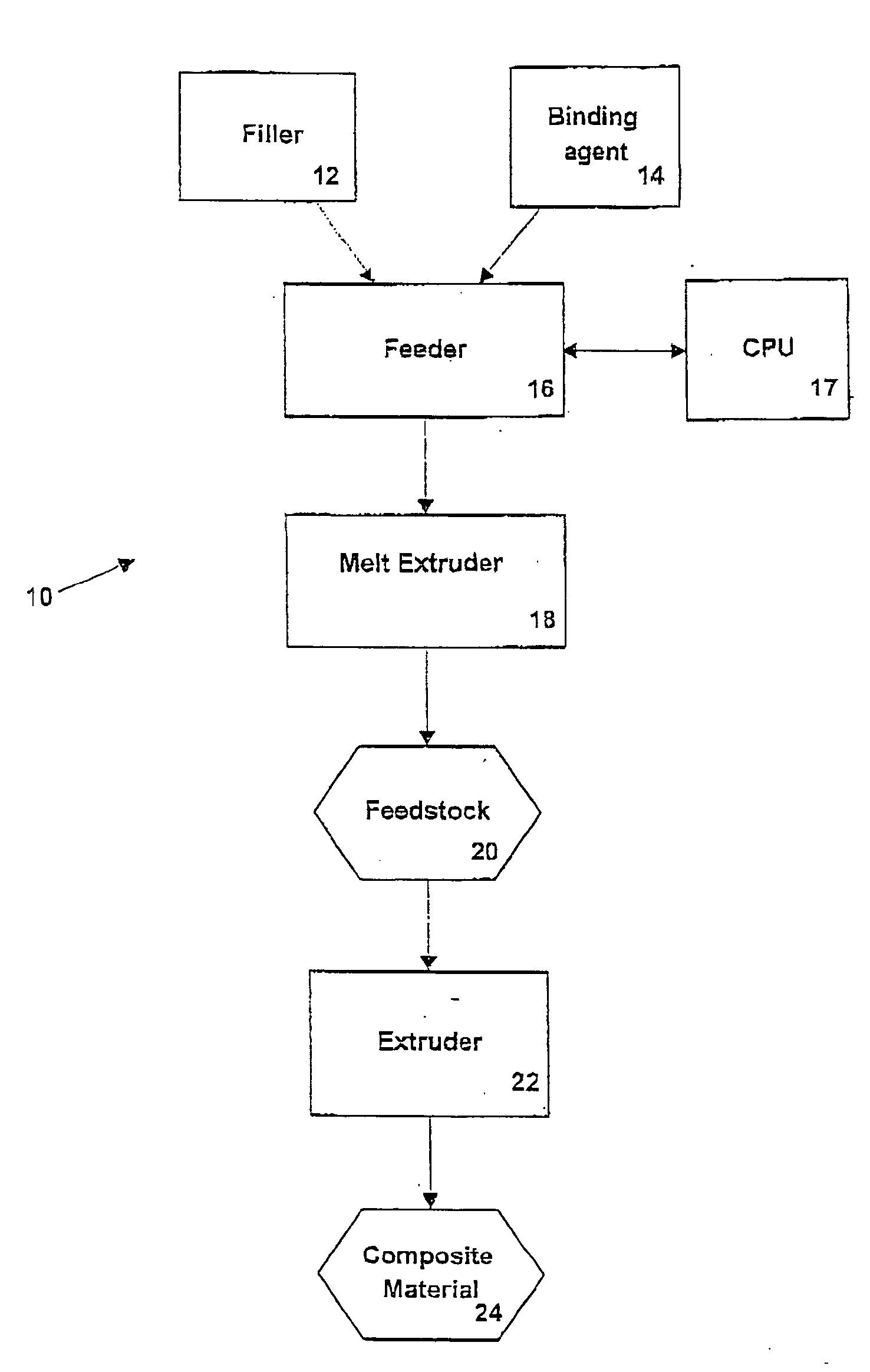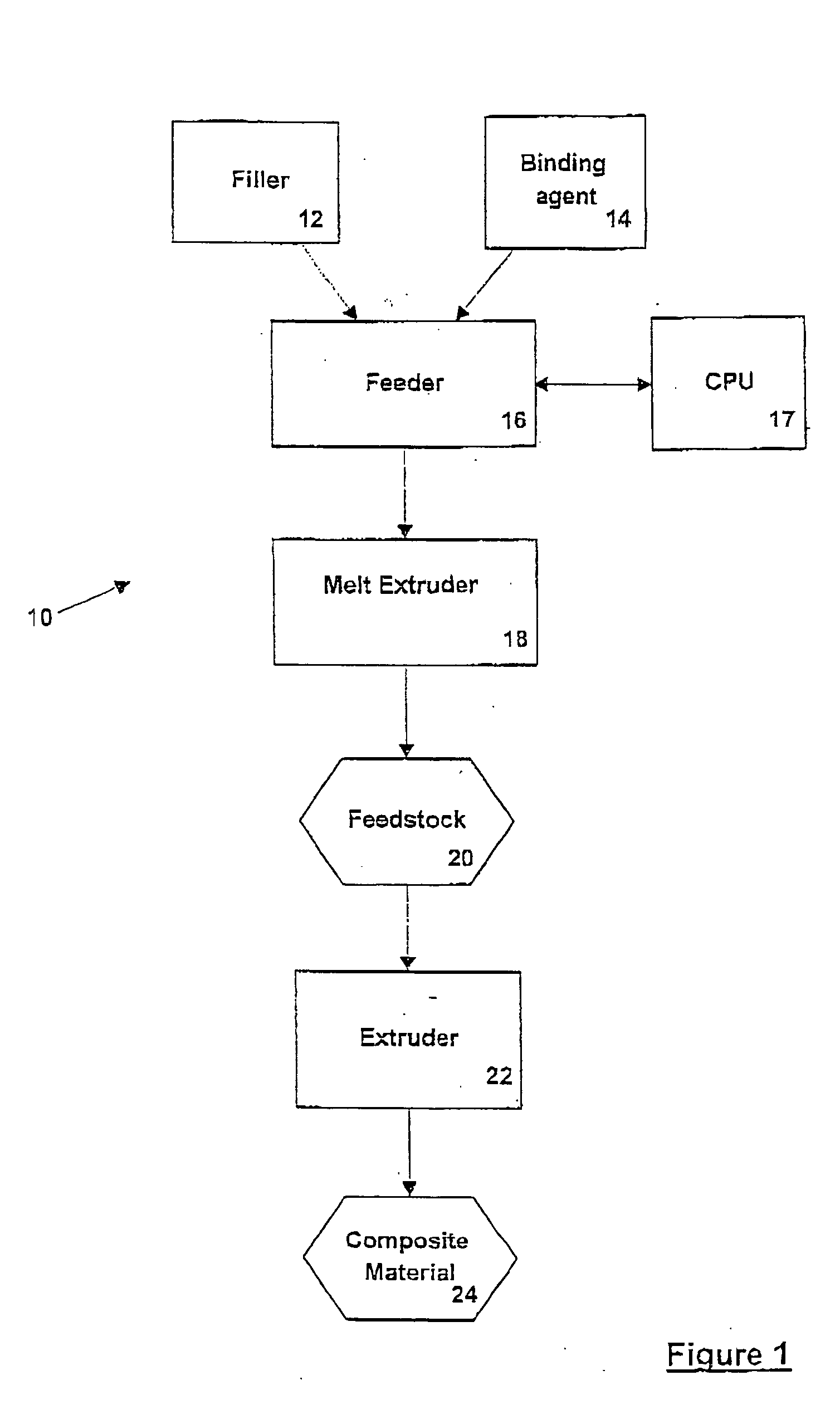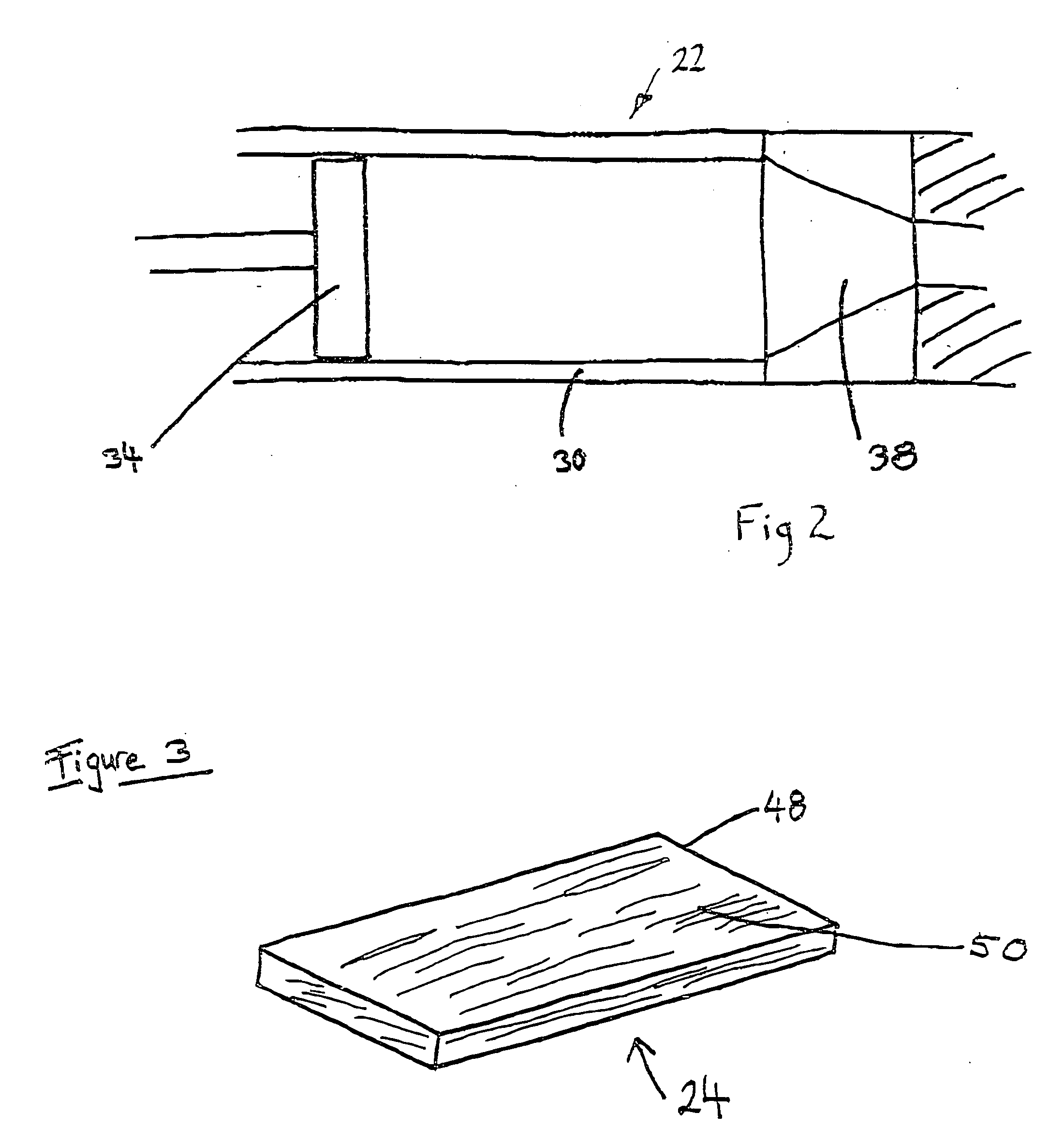Method and apparatus for extruding composite material and composite material therefrom
a composite material and extrusion method technology, applied in woodworking apparatus, filament/thread forming, flooring, etc., can solve the problems of weak polymer, transverse cracking or fibrillation, and limited commercial applications, and achieve the effect of reducing density
- Summary
- Abstract
- Description
- Claims
- Application Information
AI Technical Summary
Benefits of technology
Problems solved by technology
Method used
Image
Examples
Embodiment Construction
[0038] Referring now to FIG. 1 a method of extruding a composite material is shown generally at 10. A filler 12 and a binding agent 14 are placed in a feeder 16. Feeder 16 feeds a predetermined volume of filler 12 and binding agent 14 into melt extruder 18. In an embodiment, feeder 16 is a gravimetric feeder controlled by an external CPU 17. Melt extruder 18 mixes filler 12 and binding agent 14 to form feedstock 20, as is well known to those of skill in the art. Feedstock 20 then passes to an extruder 22, and is extruded to produce a composite material 24.
[0039] Filler 12 can be a natural fibre, such as wood and agricultural fibres such as hemp, flax, straw or wheat; a synthetic fibre such as nylon, polyethylene terephthalate, glass or polypropylene fibre with a polyethylene matrix. Filler 12 can also be a mineral based filler such as slate, talc, vermiculite or mica. In a presently preferred embodiment, filler 12 is a wood fibre concentrate. Filler 12 has a mesh in the range of 10...
PUM
| Property | Measurement | Unit |
|---|---|---|
| widths | aaaaa | aaaaa |
| widths | aaaaa | aaaaa |
| widths | aaaaa | aaaaa |
Abstract
Description
Claims
Application Information
 Login to View More
Login to View More - R&D
- Intellectual Property
- Life Sciences
- Materials
- Tech Scout
- Unparalleled Data Quality
- Higher Quality Content
- 60% Fewer Hallucinations
Browse by: Latest US Patents, China's latest patents, Technical Efficacy Thesaurus, Application Domain, Technology Topic, Popular Technical Reports.
© 2025 PatSnap. All rights reserved.Legal|Privacy policy|Modern Slavery Act Transparency Statement|Sitemap|About US| Contact US: help@patsnap.com



